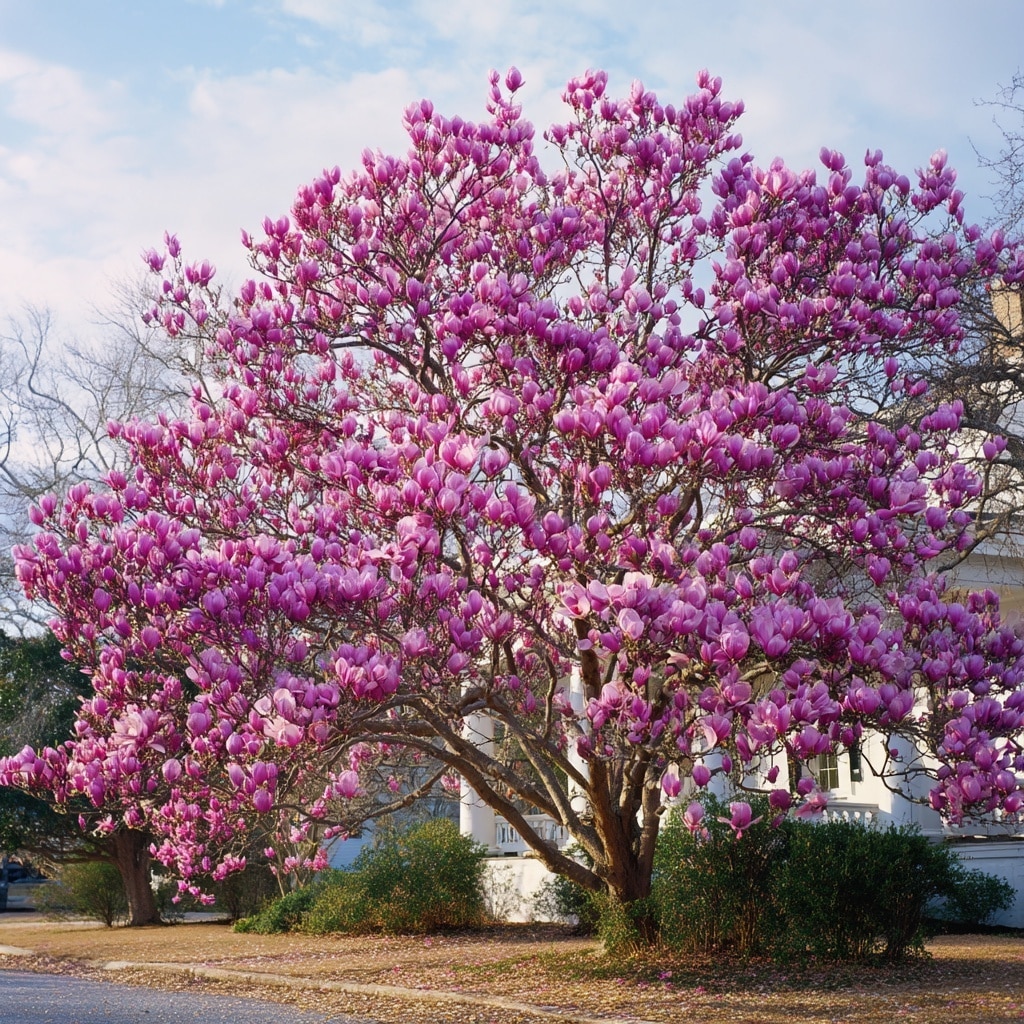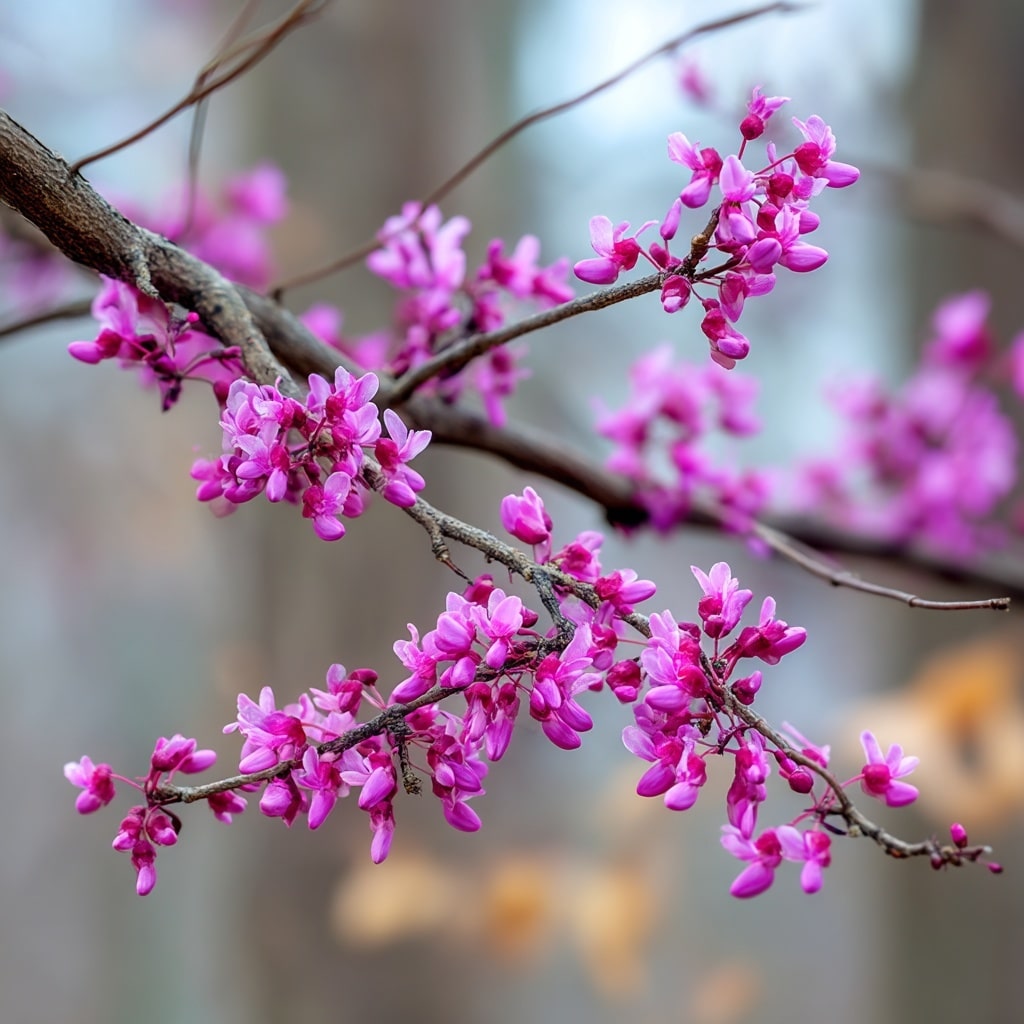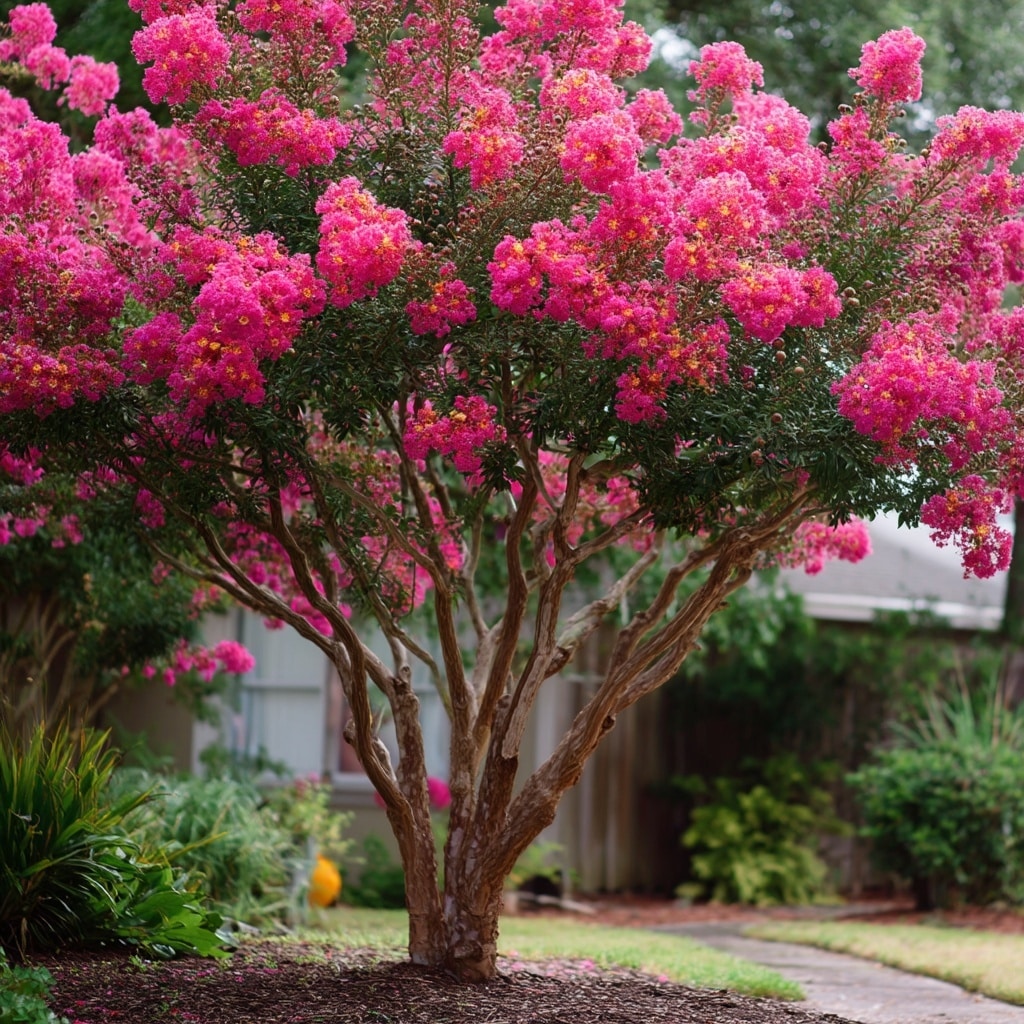A pink tree in full bloom is one of the most stunning sights of spring. Whether you’re designing a home landscape or refreshing your backyard garden, adding a pink-flowering tree can instantly brighten your outdoor space. From soft blush tones to deep rose blossoms, these spring beauties offer a vibrant welcome to the new season. In this guide, we’ll highlight six of the best trees that bloom pink in spring—each with unique characteristics to suit different climates, garden sizes, and light conditions.
Table of Contents
1. Japanese Flowering Apricot (Prunus mume)
Bloom Time: Early spring
Height & Spread: 10–20 ft tall × 10–15 ft wide
Growing Zones: 6–9
Sun Requirements: Full sun to partial shade
One of the earliest pink trees to bloom each spring, the Japanese flowering apricot adds a splash of color even when winter lingers. This ornamental tree features double-rose pink blossoms with long, delicate stamens that release a sweet, spicy fragrance. Flowers often appear as early as mid-February, making it a standout when most other trees are still dormant. While its small fruits aren’t edible, they provide a charming visual touch. For bold color and upright form, the ‘Peggy Clark’ cultivar is especially popular among gardeners seeking early-season impact.
2. Flowering Cherry Tree (Cerasus serrulata)

Bloom Time: Early to mid-spring
Height & Spread: 12–30 ft tall × 15–20 ft wide
Growing Zones: 5–8
Sun Requirements: Full sun
A classic pink tree for spring landscapes, the flowering cherry is admired for its range of cultivars, each bringing its own shade of rosy brilliance. From the early-blooming ‘Okame’ with deep pink clusters to the popular ‘Kwanzan’ and elegant ‘Yoshino,’ these trees provide a long-lasting floral display. Their blossoms typically arrive in early to mid-spring and often attract pollinators like bees and butterflies. Aside from their breathtaking beauty, cherry trees are low-maintenance, thriving with minimal care in full sun and well-drained soil.
3. Saucer Magnolia (Magnolia × soulangeana)

Bloom Time: Early to mid-spring (before leaves emerge)
Height & Spread: 15 ft tall × 8 ft wide
Growing Zones: 4–9
Sun Requirements: Full sun
The saucer magnolia is a striking pink tree perfect for smaller yards or front garden focal points. Its large, tulip-shaped blooms appear before the leaves, creating a bold floral display when little else is blooming. The flowers range in color from soft pink to purplish-pink, offering a beautiful contrast against bare branches. This magnolia’s compact shape makes it ideal for tight spaces, while its upright growth and elegant blooms bring early-season charm. It performs best in full sun with moist, well-draining soil.
4. Eastern Redbud (Cercis canadensis)

Bloom Time: Early to mid-spring (before leaves appear)
Height & Spread: 15–25 ft tall × 15 ft wide
Growing Zones: 4–9
Sun Requirements: Partial sun
The Eastern redbud is a native pink tree that puts on a show with clusters of vivid, pinkish-purple flowers blooming directly along its branches and trunk—a trait called cauliflory. This early bloomer creates a dramatic silhouette before its heart-shaped leaves emerge. Redbuds thrive in naturalized or woodland settings and are especially drought-tolerant once established. Their graceful canopy shape makes them excellent for borders, understory plantings, or as a specimen tree to add color and character in spring.
5. Pink Flowering Dogwood (Cornus florida)

Bloom Time: Mid to late spring
Height & Spread: 15–30 ft tall × 15–20 ft wide
Growing Zones: 5–9
Sun Requirements: Full sun (if planted deeply), light shade (if shallow-rooted)
Few trees capture the spirit of spring quite like the pink flowering dogwood. This elegant pink tree is treasured for its soft, pastel blossoms that appear just as the weather warms. A beloved native in many regions, dogwoods don’t just shine in spring—they offer lush green summer foliage, red autumn leaves, and bright berries that attract birds in winter. For best results, plant in filtered sunlight, especially beneath larger trees. Its four-season appeal and adaptable nature make it a favorite among gardeners seeking year-round beauty with minimal upkeep.
6. Crepe Myrtle (Lagerstroemia indica)

Bloom Time: Late spring through summer
Height & Spread: 6–25 ft tall × 8–20 ft wide
Growing Zones: 7–9
Sun Requirements: Full sun
Known for its long-lasting blooms and ornamental bark, the crepe myrtle is a versatile pink tree that continues flowering well into the summer months. Varieties range from compact shrubs to tall trees, making it easy to find a fit for any garden. Its papery blossoms come in shades from soft blush to hot pink, and the tree’s smooth, mottled bark adds winter interest. Once established, crepe myrtles are drought-tolerant, pest-resistant, and require little maintenance—making them an excellent choice for low-effort color in sunny locations.
Conclusion
Adding a pink tree to your garden isn’t just a seasonal choice—it’s a long-term investment in beauty, biodiversity, and curb appeal. Whether you prefer the early blush of Japanese apricots or the bold summer color of crepe myrtles, each of these six trees brings its own charm and benefits to your landscape. Be sure to choose varieties suited to your growing zone, sunlight conditions, and desired maintenance level. With the right pink-flowering tree, spring can be the most colorful and uplifting time of year in your yard.


